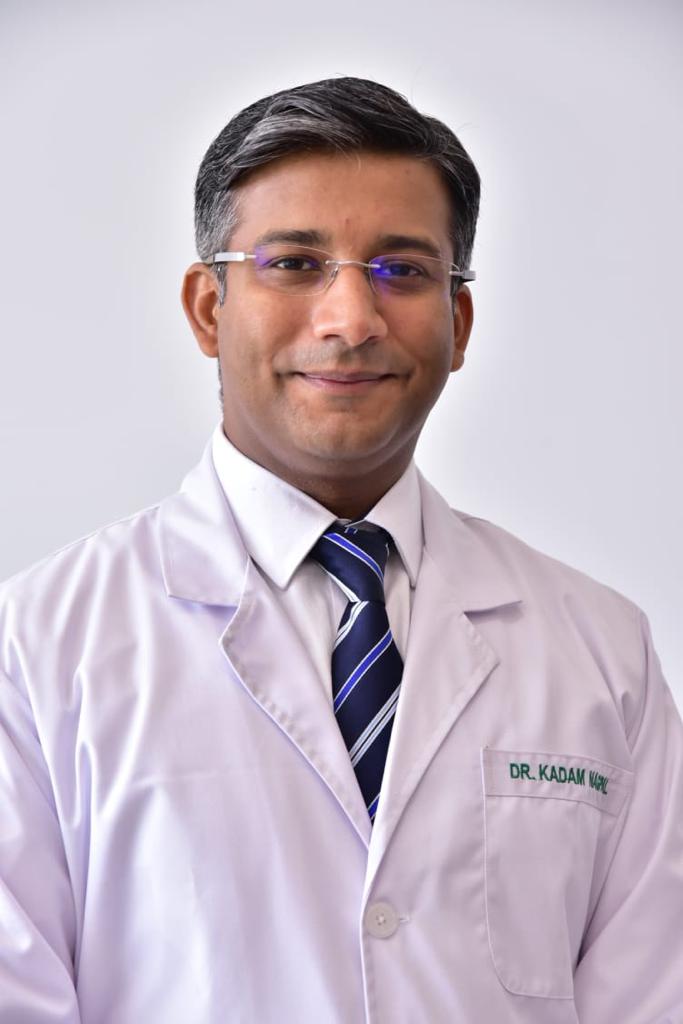Dr Kadam Nagpal says patients with symptoms should be rushed to a facility with neurology or stroke related services.
As the world observed the World Stroke Day on Saturday, doctors cautioned the younger population against a sedentary lifestyle to prevent strokes. There has also been a trend in the rising cases of stroke in the younger population, not only in India but across the world. On this occasion, The Sunday Guardian spoke to Dr Kadam Nagpal, Senior Consultant, Neurology, at the PSRI Hospital in Delhi to understand the reasons behind a stroke and how to prevent it. Excerpts:
Q: Stroke has been a major health challenge for many, as the symptoms are not understood by people in general. Please share with us some details about the warning signs of stroke and who are more prone and vulnerable to such stroke attacks.
A: The warning signs of stroke can be identified in a pneumonic, which is “B.E.F.A.S.T”: B-Balance difficulty, E-Eye Signs or blurred/affected vision, Face droop/paralysis, A-Arm weakness, S-Slurred speech and T-Time to act. Whenever these signs and symptoms are noticed, then without any further delay patients should be rushed to a nearby facility with neurology or stroke related services.
Q: There are theories that the onset of winter leads to rising cases of strokes. Is there any study to prove this theory? What has been your experience about this? Which segment of the population is prone to such winter strokes?
A: There have been many studies which have shown that there is seasonal predisposition of stroke (both ischemic and haemorrhagic) in winter months. It is postulated that winters result in increased blood pressure and constriction of blood vessels which make them more prone for any clot formation in the vessels.
Q: In recent times, we have seen that there have been rising cases of stroke among the younger population in the country. What could be the possible reasons for the same?
A: As we are approaching the winters, there will be an overall increase but simultaneously we see that rising cases are more prevalent amongst the younger population. The rising cases can be seen due to poor lifestyle, like overweight habits, sedentary lifestyle, especially in post-Covid scenarios where people are continuing to work from home, lack of exercise, excessive alcohol consumption, smoking and poor sleeping patterns. These result in poor overall general health, thereby resulting in high blood pressure, further causing strokes in young adults. A common cause to be ruled out in the younger population is illicit drug usage. Other important conditions like pre-existing heart conditions and certain genetic causes resulting in thicker than usual blood (hypercoagulable states) and this should be investigated.
Q: On the occasion of World Stroke Day, would you be able to share some statistics on the vulnerable populations and if there are any changes or patterns you have been noticing as a practicing doctor in the recent years?
A: It is estimated as per a recent study that approximately 170 people out of 10,000 per population will be afflicted by strokes per year; but probably this might be just the tip of the iceberg. The lack of a proper stroke registry might result in an underestimated figure. The patterns of stroke have been usual ever since; however, there had been a spurt in the post-Covid phase.
Q: What is the golden hour for the treatment of strokes?
A: First 3 to 4.5 hours in a stroke are extremely crucial and are termed as the “golden hour”. During this time frame, if the patient is administered in a hospital setting and a “clotbust” injection is administered after proper screening, then there is a high likelihood of the dissolution of the clot, which will further result in the reduction of disability in the patient.
Q: What are the current treatment strategies available for stroke in India?
A: In the acute/golden hour, the options are either to use a “Clotbust” injection alone or in conjunction with clot retrieval technique/intervention. For patients coming beyond the golden hour time frame or time unspecified stroke, often blood thinners and cholesterol reducing medications are considered alongside blood pressure and glycaemic/sugar level control.
Q: What are the preventive measures that one can take to reduce the chances of stroke?
A: Preventive medicines like blood thinners and cholesterol lowering medications should be added in the patients who are candidates to prevent future risks of stroke. Lifestyle modifications, weight reduction, cessation of smoking and alcohol and controlling blood pressure and blood sugar levels are required as preventive strategies.
Q: Can you explain to the layman, what are the kinds of stroke and who are vulnerable to such medical conditions?
A: There are three kinds of strokes that happen—an ischemic stroke occurs when oxygen is cut off to brain tissues because of a clot or “clogged pipe/vessel.” This clot usually forms somewhere else in the body and travels to the brain. It continues to travel until it reaches a vessel small enough to block its passage. This can happen instantly when a larger clot is released or over time as plaque builds up on the lining of a vessel making that vessel narrower. Ischemic strokes account for 80-85% of all strokes.
Another type of stroke is haemorrhagic stroke, which occurs when a vessel in the brain bursts, much like a “leaky pipe or vessel.” During a hemorrhagic stroke, blood spills into or around the brain and creates swelling and pressure. Haemorrhagic strokes account for around 15-20% of all strokes, but are responsible for 40% of all stroke deaths.
Another type of stroke is called a transient ischemic attack or TIA or “mini stroke” where symptoms are similar to that of a stroke, but spontaneously get better as the clot only manifests with temporary symptoms. Most vulnerable are the aged population of the country, people with complaints or history of high blood pressure, diabetes, obesity, smoking, dyslipidemia, history of prior stroke or underlying cardiac disease.

